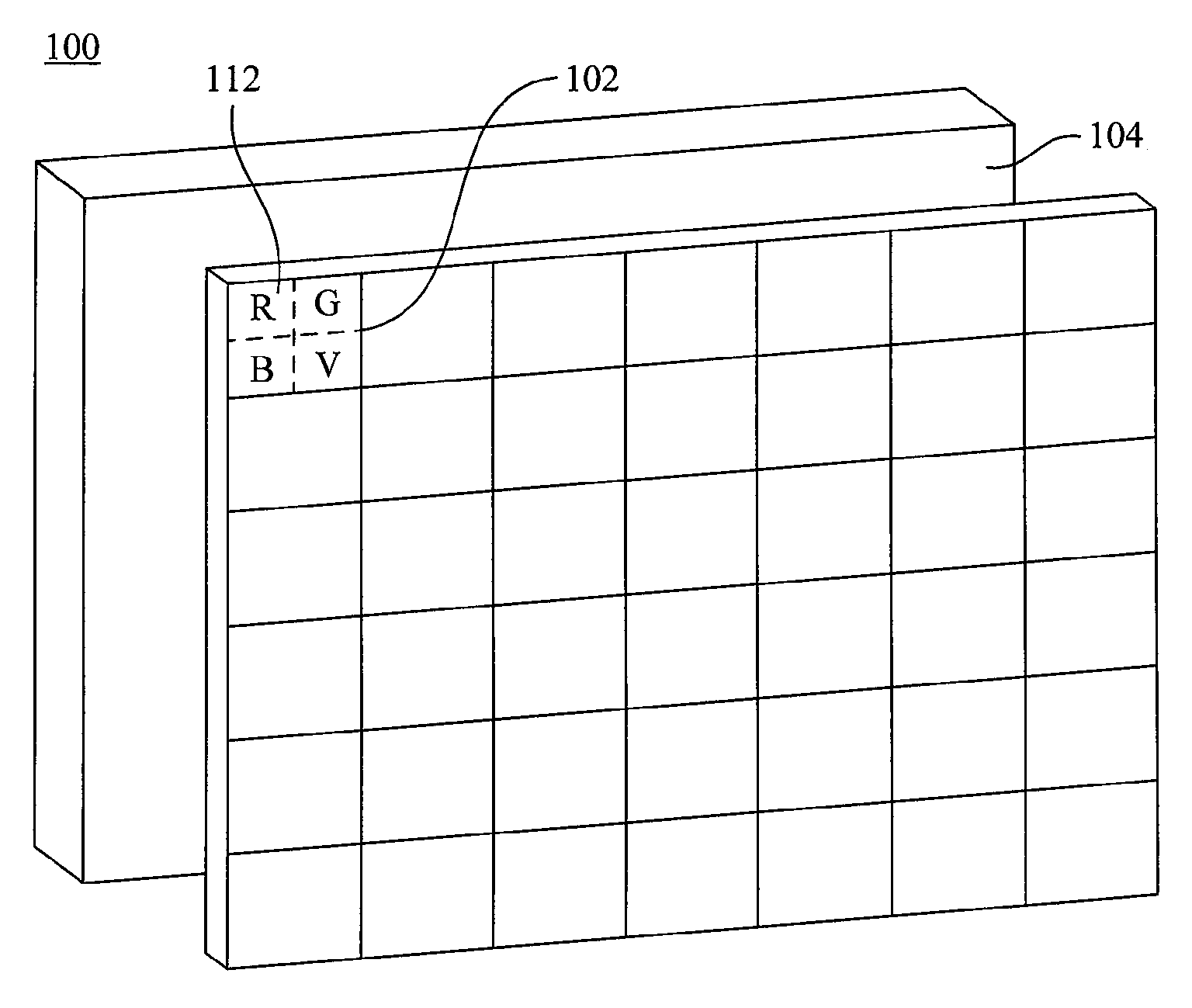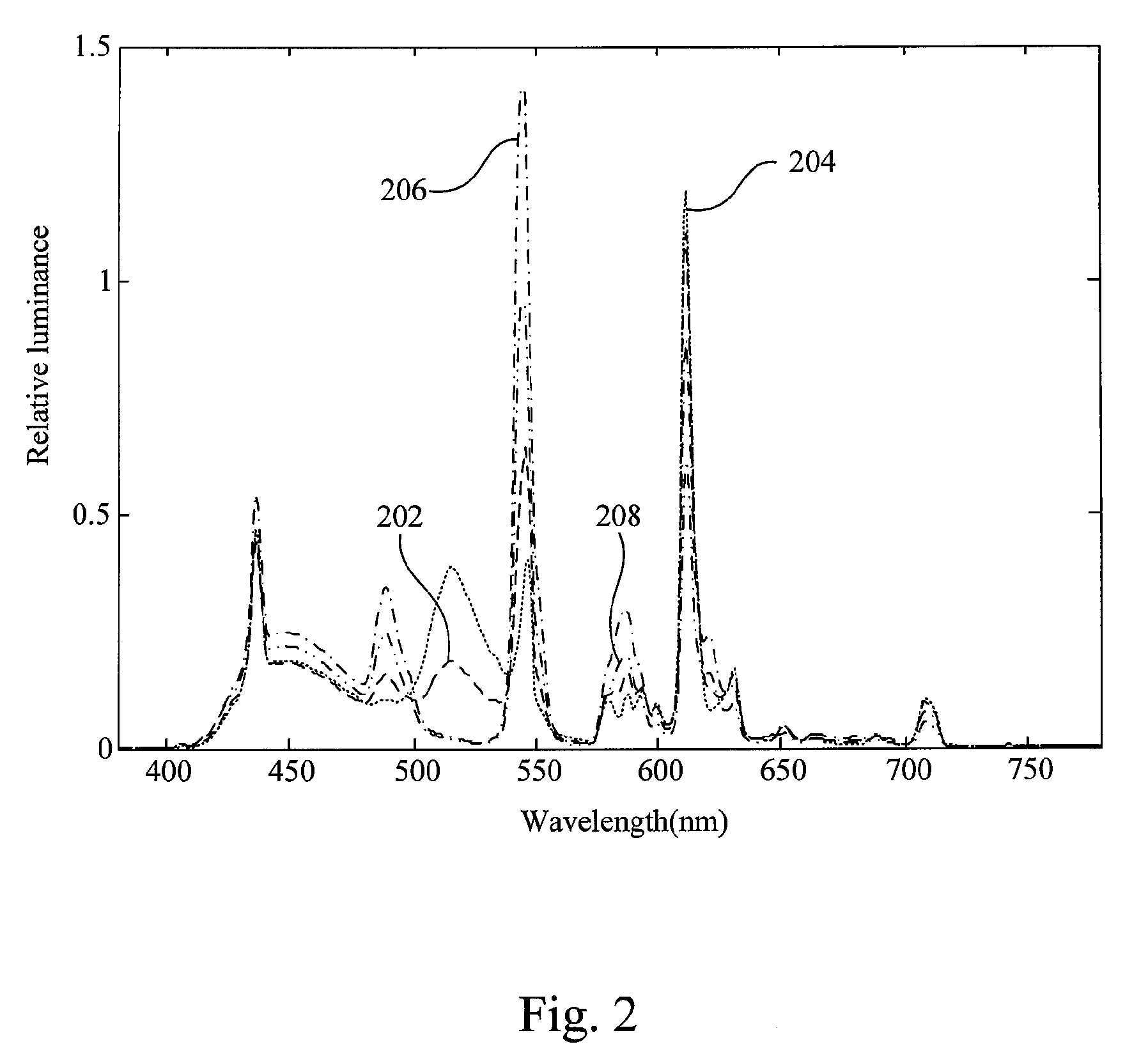Multi-primary color display
a color display and multi-primary technology, applied in the field of display devices, can solve the problems of reducing the brightness of the display, the inability of the three-primary color display to thoroughly present all colors existing in nature, and the method's limitations, and achieve the effect of widening the color gamu
- Summary
- Abstract
- Description
- Claims
- Application Information
AI Technical Summary
Problems solved by technology
Method used
Image
Examples
first embodiment
[0036]FIG. 5A shows the relative color gamut and the ratio of the relative luminance of the yellow primary color to the red primary color according to several experimental results in the first embodiment. The little circle, hollow circle, cross, and hollow square represent the results of using the first backlight source, the second backlight source, the third backlight source, and the fourth backlight source in combination with different sets of four-primary color filters, respectively. The relative luminance ratio of the yellow primary color to the red primary color is taken at the peak position of the yellow primary color in the wavelength between 550 nm˜600 nm. As shown in FIG. 5A, a wider color gamut is obtained when the ratio is greater than or equal to 1.
[0037]FIG. 5B shows the relative color gamut and the ratio of the relative luminance of the yellow primary color to the green primary color according to several experimental results in the first embodiment. The little circle, ...
second embodiment
[0043]FIG. 6A shows the relative color gamut and the ratio of the total relative luminances of the cyan primary color and the green primary color obtained from several experiments according to the second embodiment of the invention. The little circle, hollow circle, cross, and hollow square represent the results of using the first backlight source, the second backlight source, the third backlight source, and the fourth backlight source in combination with different sets of four-primary color filters, respectively. The total relative luminance here takes the total relative luminance of the cyan primary color and the green primary color in the wavelength range between 450 nm˜500 nm. FIG. 6A shows that a larger color gamut is obtained when the ratio of their total relative luminances is smaller than or equal to 1.
[0044]FIG. 6B shows the relative color gamut and the ratio of the total relative luminances of the cyan primary color and the blue primary color obtained from several experime...
PUM
| Property | Measurement | Unit |
|---|---|---|
| wavelength | aaaaa | aaaaa |
| wavelength range | aaaaa | aaaaa |
| wavelength | aaaaa | aaaaa |
Abstract
Description
Claims
Application Information
 Login to View More
Login to View More - R&D
- Intellectual Property
- Life Sciences
- Materials
- Tech Scout
- Unparalleled Data Quality
- Higher Quality Content
- 60% Fewer Hallucinations
Browse by: Latest US Patents, China's latest patents, Technical Efficacy Thesaurus, Application Domain, Technology Topic, Popular Technical Reports.
© 2025 PatSnap. All rights reserved.Legal|Privacy policy|Modern Slavery Act Transparency Statement|Sitemap|About US| Contact US: help@patsnap.com



